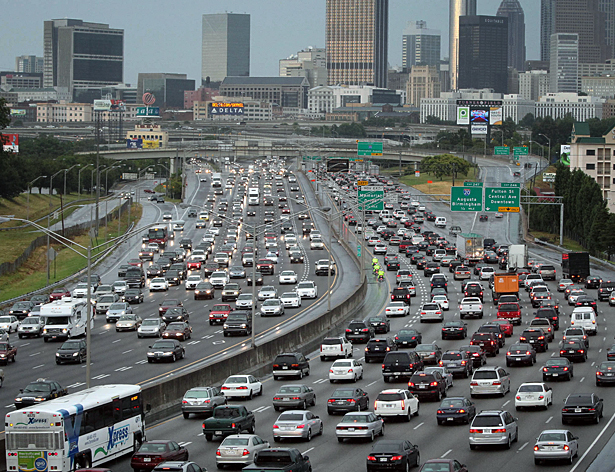Two weeks ago, I read Andy’s blog post about traffic management and wondered what solutions could be made to improve the delays that we face driving on a daily basis. Recently, I have been hearing a lot of noise about flying cars and wanted to dive into the potential of this innovation. Flying cars might seem like a fantasy, but with the recent wave of technological innovation, there is a chance that it can be a reality in the future. In 2022, the average U.S. driver lost 51 hours to congestion, and this time wasted costs drivers around 900 dollars yearly. Metropolitan cities such as Chicago, NYC, Los Angeles, and Atlanta are some of the areas that experience traffic congestion at an alarming rate. Based on the top 15 U.S. cities, around 4.7 billion hours are wasted sitting in traffic. Flying cars can minimize traffic pollution, lower emissions, and have faster commute times. Companies such as Toyota, Hyundai, Airbus, and KittyHawks are racing to develop a commercially viable vehicle, as Morgan Stanley predicts that the industry will be worth a trillion dollars by 2040.

History of Flying Cars
People have been trying to make a flying car since the early 1900s. Even Henry Ford had plans to develop a flying car, but this plan never worked out after a prototype crashed into the ocean. In the 1930s, the waterman arrowbile was created and was able to make a 2000-mile trip. Only five were created as there was little customer interest at the time. Henry Dreyfuss created the ConvAirCar, which was essentially just an automobile with wings and a propeller on top of the roof. As the years went back, there wasn’t much interest in flying cars as all previous attempts had failed, and many people had died because of the accidents. Flying cars were even depicted in cinema in the film Blade Runner which showed police vehicles being able to fly and drive.
With recent issues such as traffic and climate change, transportation has to be a big reason for this. One of the biggest problems is that cities such as Atlanta need more public transit to be able to curb traffic. Most people use vehicles to go from one place to another, but these vehicles burn fossil fuels and are harmful to people living in these cities. Flying cars can help the environment and free up the roads for cyclists and pedestrians. These vehicles are called vertical takeoff and landing vehicles(VTOLs). Most of these are electric as well. Flying cars will change the world and help shape the future of cities worldwide as urban sprawl is on the rise. Around seventy percent of the global population is forecasted to live in cities by 2050, so improving transportation should be one of the biggest things to improve.

Challenges
The most significant challenge facing flying cars is safety. Being able to take off safely and land is one of the most important things to ensure that this technology will be safe to use. There are technical challenges as well with the use of batteries. For example, if someone needs to go on a longer journey, the vehicle would need a larger battery, and this causes a chance of a fire due to overheating. Due to these restraints, many of these vehicles can only travel for a short amount of time. Regulation and policy are another hurdle; as Sally Kay mentioned a couple of weeks ago that new technologies force new policies and laws to come to fruition as things constantly change. Regulatory requirements would include needing to get both a driver’s license and pilot license as well as ensuring that the vehicles get approval by highway and aviation agencies.

Future Outlook
Many companies expect flying cars to be commercially available in 2024 or 2025. These timelines could be a little off as one doesn’t know if these will change. A Japanese startup, Skydrive, has been taking pre-orders for their new eVTOL, costing 1.5 million. Skydrive hopes to have these available in 2025, but only time will tell if this ends up panning out. In 2020, Joby Aviation bought Uber Elevate, the aerial ride division under Uber, and the company has been dubbed the “Uber of the Sky.”
Only time will tell if flying cars become a reality. There are still ongoing challenges, but new technologies will be able to address some of the concerns, such as safety and infrastructure. Flying cars would be cool, but it remains to be seen if flying cars are a viable solution to meeting the world’s transportation needs.